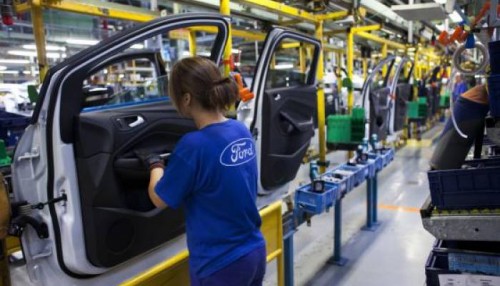The muscle behind the U.S. economic expansion is the same as the recovery’s weakness, and it lies in one word: Mexico, writes bloomberg.com’s Connor Sen.
Since the low in December 2009, employment in the U.S. has increased by 13.6 million workers. Forty-three percent of that growth, or 5.9 million workers, came from Hispanics — some born in the U.S., others immigrants. Mexico is by far the largest country of origin for Hispanic immigrants to the U.S. Net migration from Latin America since the recession has been minimal (more Mexicans have left than arrived), so this can best be thought of as a “demographic dividend” from Hispanic immigration in the 1980s, 1990s and 2000s. More Hispanics are entering their prime working years, or are too young to retire, in contrast to the shrinking labor force of white non-Hispanic Americans. Excluding Hispanics, the labor force in the U.S. is virtually unchanged since 2008.
The thing about workers is they tend to be spenders too. From 2012 to 2015, Latino households represented a significant share of aggregate spending growth. In the future their impact on consumer spending is likely to be greater than that of millennials or baby boomers.
The states with lower Hispanic populations have economies that can best be seen as going through a managed decline, like Europe or Japan. Manufacturing-heavy Michigan has one of the lower Hispanic populations in the country, 4.6 percent of its population as of 2012. Its labor force is the same size as it was 22 years ago. Its unemployment rate is 4.5 percent, the lowest level since 2001, as employers struggle to find workers.

Mexico has overtaken Brazil as the leading auto manufacturing country in Latin America. (PHOTO: Panamericanworld.com)
So it should be no surprise that a Michigan-based company like Ford announced this month that it was moving all small car production from Michigan to Mexico, as low profit margins and scarce labor in Michigan makes it uneconomical to produce the cars here. Nine of the eleven new car factories built in North America since 2011 have been in Mexico.
This shift abroad isn’t necessarily bad news for Michigan auto workers. Ford is to reallocate its domestic labor to produce higher-value products like trucks and SUVs.
The fast-growing diverse states in the South and the West and the slow-growing largely white states in the Northeast and Midwest have different labor challenges over the next generation, but in both cases Mexico will have to be a part of the solution.
In the South and West, the challenge will be finding enough workers to support the construction of needed housing and infrastructure, plus all of the other service-sector work needed by a growing economy. In the Northeast and Midwest, where labor forces are shrinking and populations are aging, the choice is between importing workers to fill the labor gap or exporting some work, as Ford has done, to free up dwindling workforces to do other tasks.
Why is Mexico providing such an important part of the U.S. economy’s workforce — both inside the U.S. and south of the border? Because it’s one of the few countries in the world with the demographic and geographic profile to support the labor force needs of a country as large and dynamic as the U.S. It is 10th in the world in population and still has a growing prime-age workforce, and it’s right next door to the U.S. Also because there are already well-established cultural ties between Mexico and many parts of the U.S., and because there are trade deals in place.
And finally, in the short run, Mexico is the only game in town. Since World War II, when Mexican farmworkers came to the U.S. to meet wartime demand, Mexico has always been the default answer for any labor shortage in the U.S. High-skilled immigration from China and India is great, but is unlikely to address labor shortages in construction or food service. And given the political resistance to immigration even from a familiar ally like Mexico, it’s hard to fathom public support for mass immigration from anywhere else.
When it comes to the U.S. workforce and when it comes to U.S. companies shifting jobs abroad, the future of the U.S. economy will likely be hecho en Mexico.
Source: bloomberg.com

